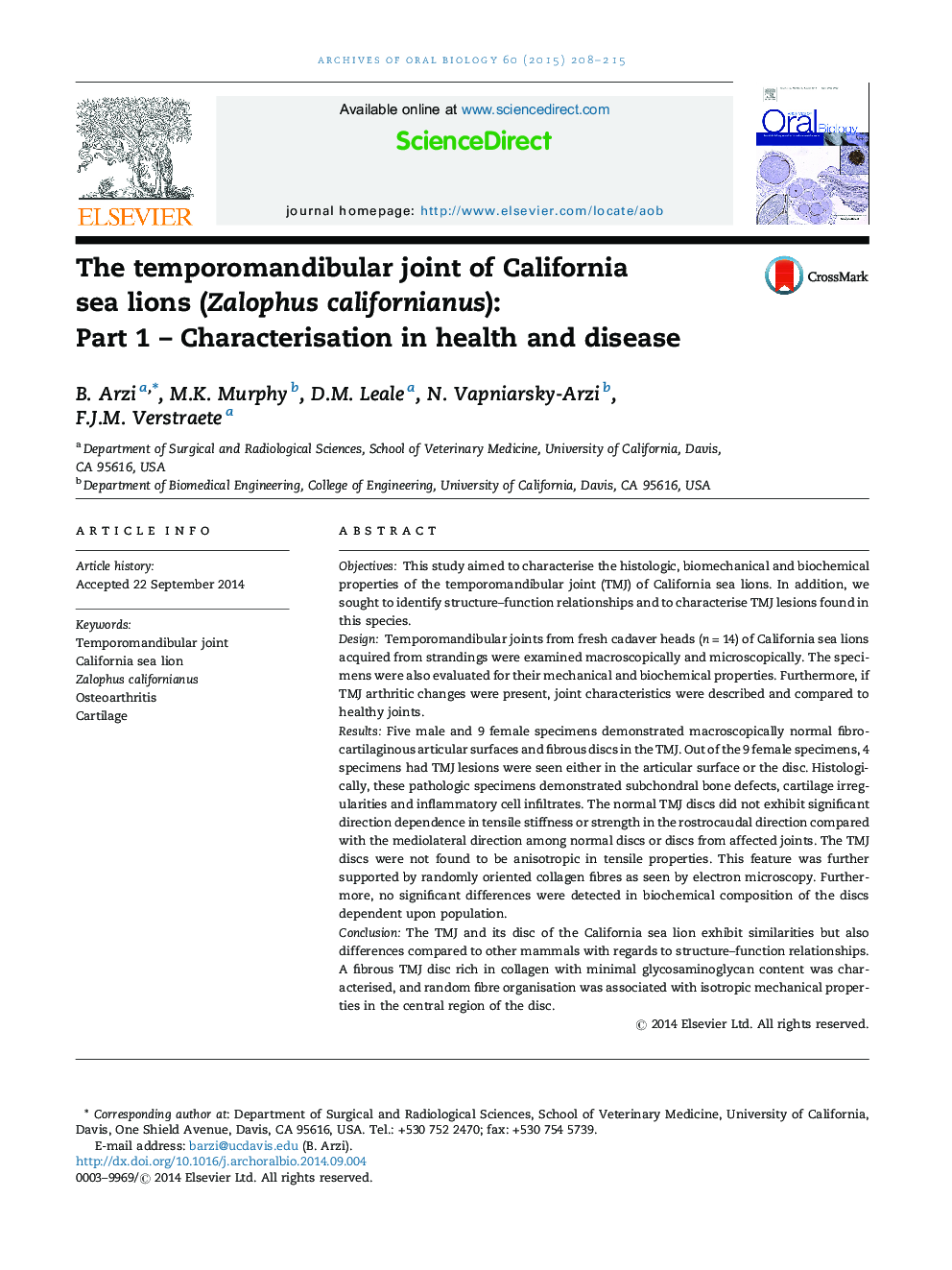| کد مقاله | کد نشریه | سال انتشار | مقاله انگلیسی | نسخه تمام متن |
|---|---|---|---|---|
| 3120867 | 1583304 | 2015 | 8 صفحه PDF | دانلود رایگان |

• This is the first study to characterise the TMJ of California sea lion in health and disease.
• The TMJ of California sea lion (Zalophus californianus) has fibrocartilaginous articular surfaces and fibrous discs as seen are most mammals.
• We also demonstrate that their TMJ demonstrated pathological features indicative of osteoarthritis.
• Unlike other mammals, their TMJ discs are not anisotropic in tensile properties and in biochemical properties.
• The TMJ and its disc exhibit similarities but also differences compared to other mammals with regards to structure–function relationships.
ObjectivesThis study aimed to characterise the histologic, biomechanical and biochemical properties of the temporomandibular joint (TMJ) of California sea lions. In addition, we sought to identify structure–function relationships and to characterise TMJ lesions found in this species.DesignTemporomandibular joints from fresh cadaver heads (n = 14) of California sea lions acquired from strandings were examined macroscopically and microscopically. The specimens were also evaluated for their mechanical and biochemical properties. Furthermore, if TMJ arthritic changes were present, joint characteristics were described and compared to healthy joints.ResultsFive male and 9 female specimens demonstrated macroscopically normal fibrocartilaginous articular surfaces and fibrous discs in the TMJ. Out of the 9 female specimens, 4 specimens had TMJ lesions were seen either in the articular surface or the disc. Histologically, these pathologic specimens demonstrated subchondral bone defects, cartilage irregularities and inflammatory cell infiltrates. The normal TMJ discs did not exhibit significant direction dependence in tensile stiffness or strength in the rostrocaudal direction compared with the mediolateral direction among normal discs or discs from affected joints. The TMJ discs were not found to be anisotropic in tensile properties. This feature was further supported by randomly oriented collagen fibres as seen by electron microscopy. Furthermore, no significant differences were detected in biochemical composition of the discs dependent upon population.ConclusionThe TMJ and its disc of the California sea lion exhibit similarities but also differences compared to other mammals with regards to structure–function relationships. A fibrous TMJ disc rich in collagen with minimal glycosaminoglycan content was characterised, and random fibre organisation was associated with isotropic mechanical properties in the central region of the disc.
Journal: Archives of Oral Biology - Volume 60, Issue 1, January 2015, Pages 208–215